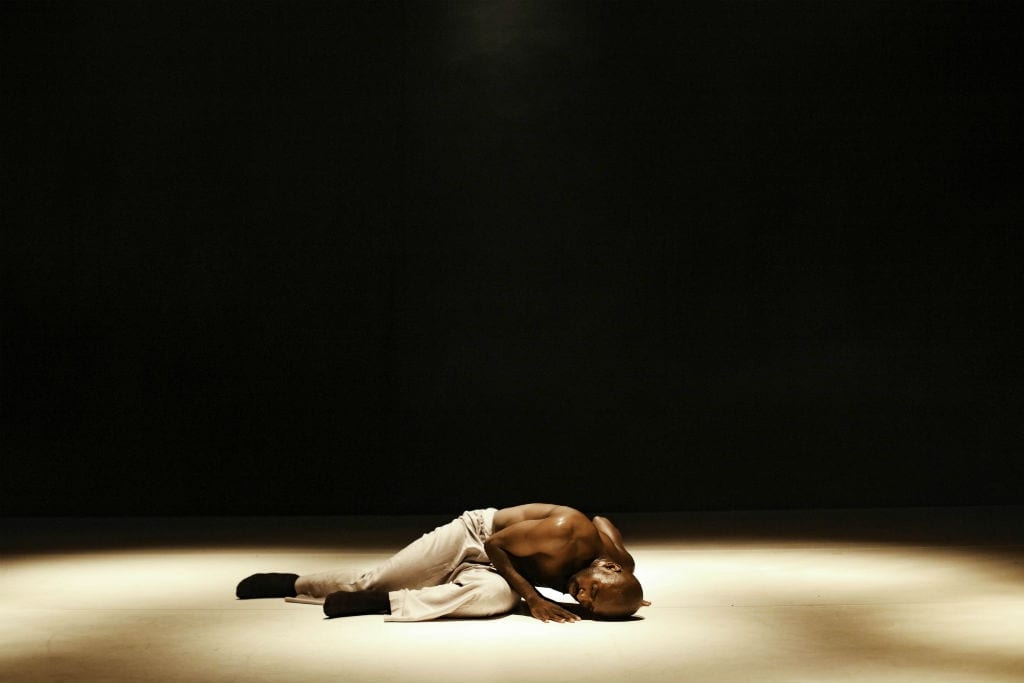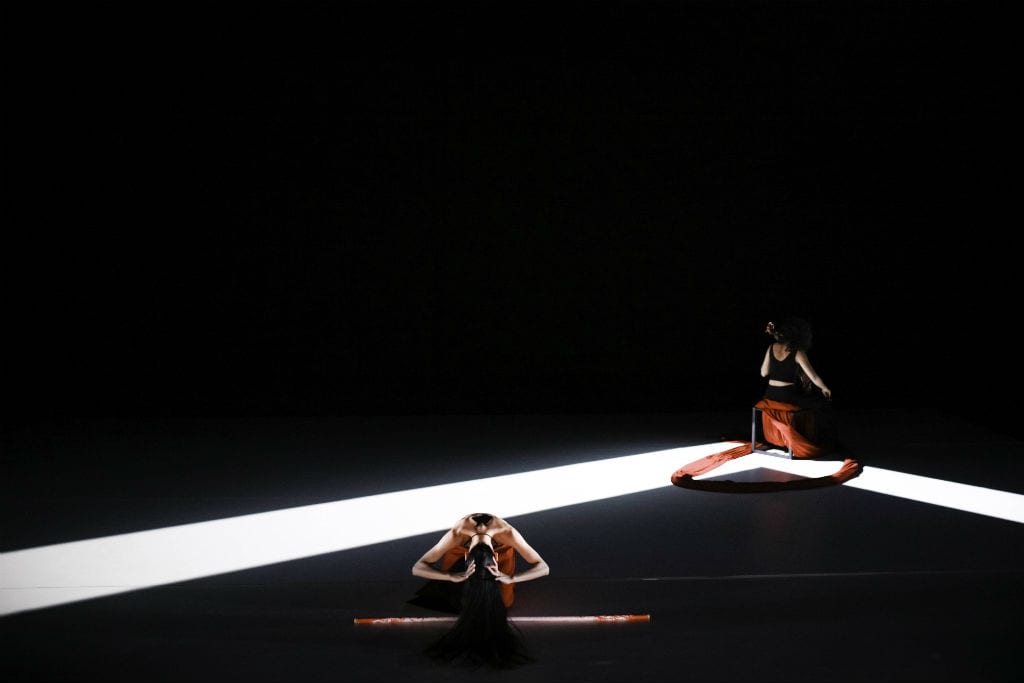As a primarily non-verbal creative medium dance is always a challenge to the reviewer trying to find suitable words that are evocative rather than pretentious, accurate rather than dryly technical. All the more so when the themes are abstract and without obvious linear narrative. However, there are real rewards too as the audience has to focus on the pure abstract aesthetic appeal of unmediated expressive movement performed over time, enhanced by the resources of lighting, music and costume.
These qualities are very much to the fore in the two pairs of solo performances by young member of the Akram Khan Company which have their first outings at Sadler’s Wells this month. The first evening offers Maya Jilan Dong and Dickson Mbi with choreography that is both drawn from inherited tradition and devised afresh, with original scores from Joanna Clara and Roger Goula.
In Whip Dong draws on the dance traditions of Yunnan province in South West China, where she grew up as a member of the Bai minority. At the outset the ritualistic elements of her performance are immediately apparent. She lies prone, mostly concealed under a long splash of red fabric that connects upstage to where Clara sits playing her cello with her back to the audience. This fabric is a long train, part of an elaborate and striking costume devised by Marie Cantenys, which forms a salient part of the performance, as a does a long wooden pole, operating in counterpoint to the movements of Dong’s body.
The dance begins slowly as Dong uses the pole in a variety of guises – to remove elements of her costume, balanced on her head or in rapid free movement as either support or weapon, additional reinforcing emphasis to the beat of the music. Delicate small-scale movements associated with supplication give way to agitation and even frenzy as the plangency of the music accelerates and adds percussive and vocal effects. Perhaps the most remarkable moments come when she weaves her long hair around the pole and dances with it as if it were an oversized pin or needle. In all this is a wholly absorbing performance of carefully devised continuity of line and modulations of mood. At the whirling climax with hair flying and hands slapping and red nail-shields flashing you are reminded of the Rite of Spring but in a wholly different cultural context.

Dickson Mbi’s Duende follows the association of this title with passion and spiritual exultation, but then takes it in a different direction. Dappled light effects and a low throbbing heartbeat of electronic sound accompanies Mbi’s slow diagonal entry from backstage, with gliding and crouching movements to the fore. Gradually the movement and the music become more anguished and detailed, as Guala’s score begins to sound like the tolling bells of minimalist music and Mbi develops a series of elaborate sequences of striving torsion that remind you of Michelangelo’s sculptures of slaves struggling free from marble. Athletic leaps follow as the dancer seeks to break free of this world, without ever finally achieving it. There are traces of Mbi’s background in hip-hop, but well integrated into the structures of this impressively moving piece. Mbi is stripped to the waist, and the play of light on his musculature was an important part of the story as the muscles flowed and twisted in search of meaning.
While this was not a long programme overall the care over the integration of choreography, lighting, music and costume produced in each case two most impressive performances that linger long in the memory

